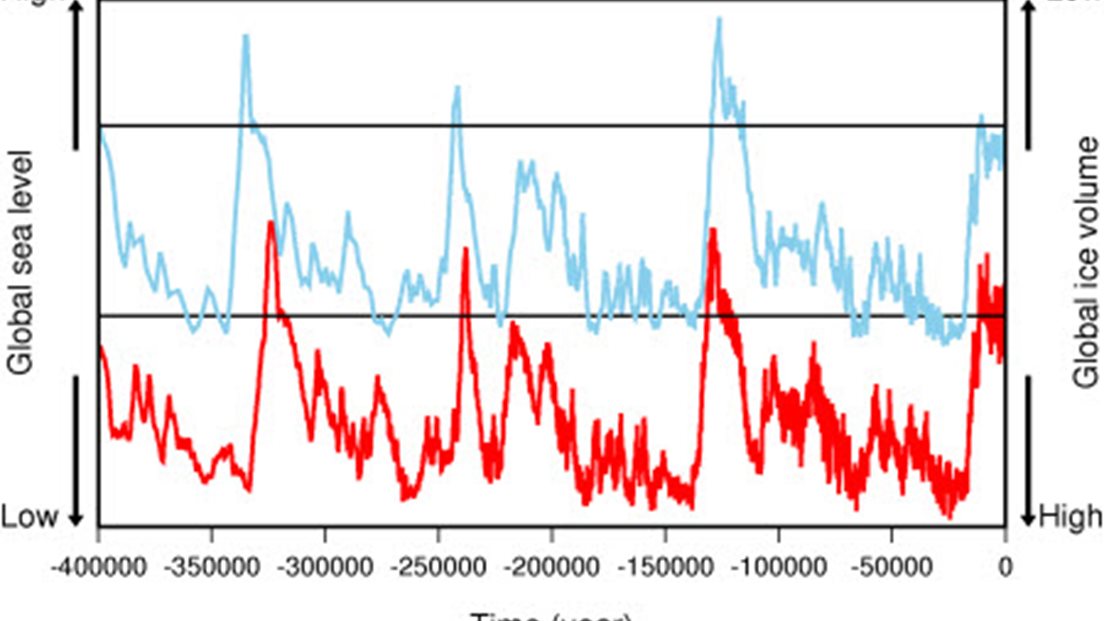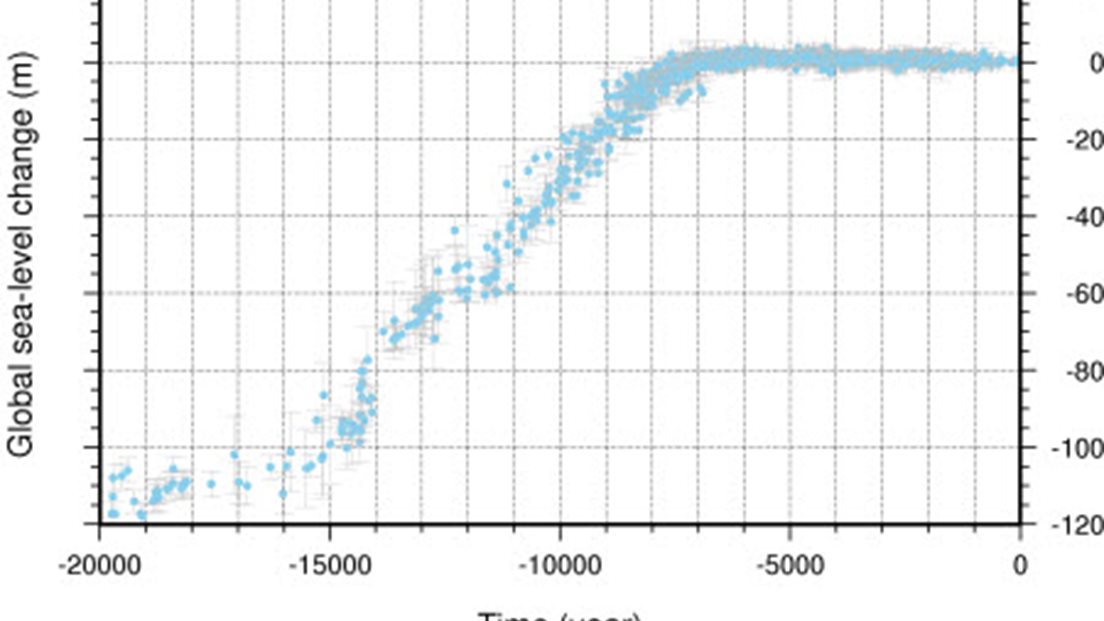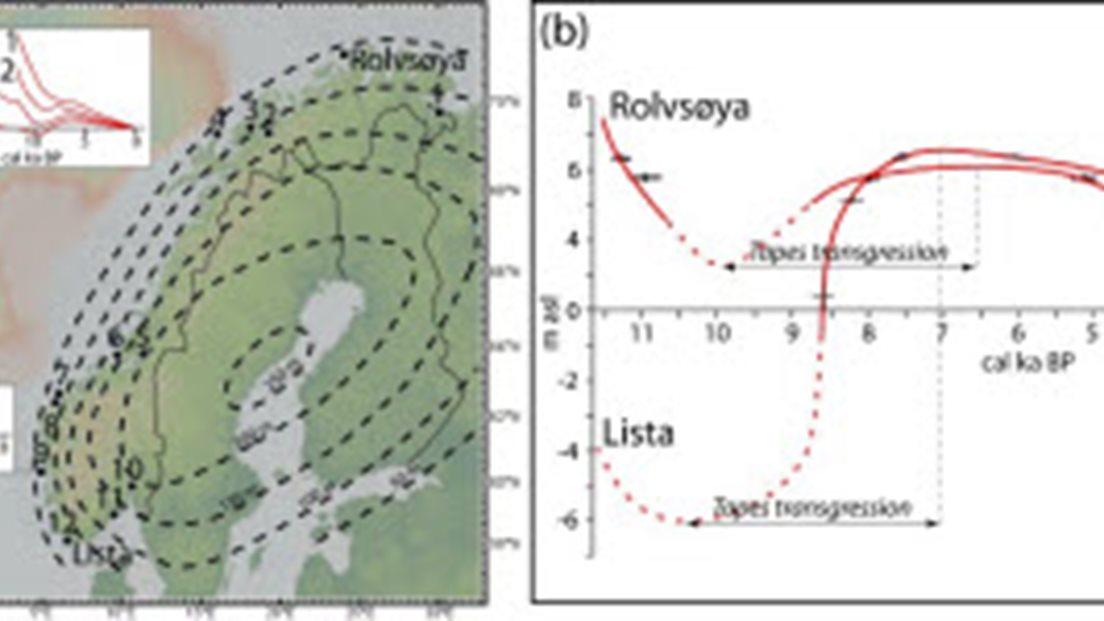Milankovitch and Paleo Sea-Level Changes
Understanding why and how the sea-level changes took place is key to improving our understanding of what may happen in the future.
Milutin Milankovitch (1879-1958) was a Serbian scientist who came up with the theory that long-term climate changes are governed by changes in how the Earth orbits around the Sun – now more commonly known as Milankovitch cycles. The theory describes how the amount of solar radiation hitting the Earth changes over long timescales due to cyclical variations in Earth's orbit. It is widely accepted that it is these long-term variations that have driven past glacial-interglacial periods.
Evidence from ice cores and marine sediment records show how the Earth has shifted from cold phases (glacial) to temperate phases (interglacial) in the recent geological past. Recent in this context means the past 2.6 million years to present, or what geologists know as the Quaternary Period. Over the most recent part of the Quaternary Period, glacial-interglacial cycles have had a period of ~100,000 years.
During glacial periods, large ice sheets typically build up over parts of the Northern hemisphere, for example, in North America and here in Scandinavia. Interglacial periods are characterized by warmer temperatures, melting of ice sheets, and are generally much shorter than glacial periods. These changes can be seen from the pattern of sawtooth waves in the figure below.
During the last glacial period, the maximum volume and extent of the large ice sheets was reached around 20,000 years ago – since that time we have entered the present interglacial period, global temperatures rose and then stabilized ~10,000 years ago, and many of the large ice sheets disappeared.

Changes in the amount of land ice clearly has implications for sea level. Thus, during glacial periods when water is contained in large continental ice sheets, global sea level is low. Whereas, during an interglacial period global sea level is much higher. As we entered the present interglacial ice sheets and glaciers melted and reduced in size, the large ice sheets over North America and Scandinavia disappeared – the loss of this land ice into the oceans caused a global sea-level rise of ~130 m over the past 20,000 years. This represents an enormous movement of mass on our planet's surface.
Paleo sea-level records show global sea level initially rose very rapidly before stabilizing close to present-day levels around 7,000 years ago. Human civilization has therefore developed over a time when global sea levels have been very stable.

Sea-level fall in Norway?
In contrast to the rise in global sea level that also occurred along the majority of the world's coasts, relative sea level in Norway has undergone an overall fall since the last glacial period. Norway's sea level history is therefore rather different to what has happened elsewhere.
Relative sea level has fallen because of the large land uplift we have experienced due to glacial isostatic adjustment. In short, as the weight of the ice sheet covering Scandinavia has been removed, the land has uplifted and the coastlines of Norway have risen out of the sea. Thus, despite rising global sea levels, land uplift is clearly the dominant factor contributing to past relative sea-level changes in our region.

Understanding paleo relative sea-level changes in Norway is useful because it tells us about:
- Past ice sheet changes over Scandinavia
- How the Earth deforms in response to these ice sheet changes.
Improving our knowledge of what happened in Norway during the geological past also allows us to place present sea-level changes in context. If we look at the past observations in more detail we see that, although there is a general pattern of overall relative sea-level fall, the size of this fall varies from location to location in Norway.
Furthermore, the observations also show large variations in time – for example, some records indicate that rapid relative sea-level fall was interrupted by periods of significant rise. This reflects a complex interplay between land uplift due to ice sheet changes, global sea-level changes, and gravitational and rotational effects. Understanding why and how these changes took place is key to improving our understanding of what may happen in the future.
References
EPICA community members. (2004). Eight glacial cycles from an Antarctic ice core. Nature, Vol. 429, No 6992, pp.623-628, June 10, 2004. doi:10.1038/nature02599.
Lambeck, K., Rouby, H., Purcell, A., Sun, Y., Sambridge, M. (2014). Sea level and global ice volumes from the Last Glacial Maximum to the Holocene. Proc. Natl Acad. Sci. USA 111, 15296–15303.
Petit J.R., Jouzel J., Raynaud D., Barkov N.I., Barnola J.M., Basile I., Bender M., Chappellaz J., Davis J., Delaygue G., Delmotte M., Kotlyakov V.M., Legrand M., Lipenkov V., Lorius C., Pépin L., Ritz C., Saltzman E., Stievenard M. (1999). Climate and Atmospheric History of the Past 420,000 years from the Vostok Ice Core, Antarctica, Nature, 399, pp.429-436.
Ramberg, I.B., Bryhni, I., Nøttvedt, A., Rangnes. K. (2008) Landet blir til - Norges geologi. Norsk Geologisk Forening. ISBN 978-82-92344-31-6.
Romundset, A., Bondevik, S., Bennike, O. (2011). Postglacial uplift and relative sea level changes in Finnmark, northern Norway. Quaternary Science Reviews 30, 2398–2421. doi:10.1016/j.quascirev.2011.06.007.
Romundset, A., Fredin, O., Høgaas, F. (2015). A Holocene sea-level curve and revised isobase map based on isolation basins from near the southern tip of Norway. Boreas doi:10.1111/bor.12105.

The mail has been sent!